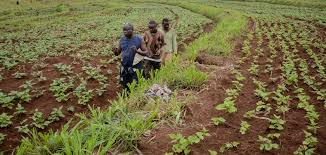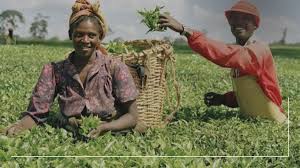This article addresses the relationship between the variable input and the output, as well as the relationship between two variable inputs used to produce a single output. The focus here is on the relationship between two products that are produced using the same inputs, linking the content to Agricultural Finance.
Production Possibility Curve in Agricultural Finance
Given a set of resources that can be used to produce two enterprises, many different combinations of the two enterprises can be produced by the same amount of inputs.
The line joining these various combinations is called the Production Possibility Curve. The question is: among the various combinations of these enterprises, which combination will yield the highest net revenue?
Here, the problem lies in finding the combination of enterprises that gives the greatest net income. When resources are limited, this principle assumes greater importance in selecting combinations of enterprises.
The problem in this principle primarily depends upon the interrelationship between enterprises, i.e., whether they are independent, joint, complementary, supplementary, or antagonistic.
Read Also: Nine (9) Nutrient Requirements of Rabbits
Competitive Enterprises in Agricultural Finance

When resources are limited, enterprises compete for their use. The two relevant questions in this context are: which enterprise should be included in the farm business, and how large should it be? The rate of substitution of one enterprise receives a larger reduction in the other enterprise.
An increasing rate of substitution is most common in agriculture because of the diminishing marginal productivity of enterprises. A constant rate of substitution is possible when a constant amount of one enterprise is replaced by the other enterprise. An example of enterprise combination is provided in Table 3.1.
Optimal Enterprise Combination in Agricultural Finance
Profit-maximizing enterprise combination lies in knowing the trade-off between the enterprises and price ratio. This trade-off line is called the production possibility curve (PPC).
The Production Possibility Curve represents all possible combinations of two products that could be produced with a given quantity of inputs. Since this curve (PPC) assumes a fixed level of finance or any other crucial input, it is also called the iso-resources curve.
To know which of the enterprise combinations will give the highest net revenue, prices of the two products must be introduced. The line connecting the various combinations of the two outputs that will yield the same revenue is called the iso-revenue line. The slope of this iso-revenue line is the ratio of the prices of the two enterprises.
Decision Rule in Agricultural Finance
The procedure for determining profit maximization is basically analogous to that of the least cost principle, but with one exception. For enterprise combinations, when the substitution ratio is less than the price ratio, substitution should continue by moving downwards to the right on the PPC. Conversely, when the substitution ratio is greater than the price ratio, adjustments should be made upward, i.e., to the left of the PPC.
The profit maximization point is where the iso-revenue line is tangent to the PPC, meaning the slopes of the PPC and the iso-revenue line are equal.
Read Also: Principles of Feeding Rabbit and Feed Resources
Types of Product-Product Relationships in Agricultural Finance

When enterprises have a constant rate of substitution, the PPC assumes a straight line touching the two axes. In this case, the profit maximization solution will be to produce one of the enterprises but not a combination of enterprises.
An increasing substitution ratio will result in a combination of enterprises. The combination depends on the current price ratio. Any change in the price ratio of the output will affect the profit-maximizing enterprise combination.
The shape of the PPC curve will differ when other types of enterprise combinations are considered. These could be complementary relationships or supplementary relationships.
Supplementary and Complementary Relationships in Agricultural Finance
Two enterprises are said to be complementary if an increase in the production of one enterprise leads to an increase in the production of the other enterprise (Figure 3.3). In the diagram on the PPC, up to the point “B,” cassava is complementary to hogs, and beyond point “B,” it becomes competitive.
Enterprises are said to be supplementary if the production of one enterprise can be increased without affecting the production of the other enterprise. In Figure 3.4, up to the point “B,” paddy rice is supplementary to dairy enterprise. Beyond point “B,” the two enterprises become competitive.
Enterprises are not usually complementary for all combinations and become competitive after a certain degree of combination.
Do you have any questions, suggestions, or contributions? If so, please feel free to use the comment box below to share your thoughts. We also encourage you to kindly share this information with others who might benefit from it. Since we can’t reach everyone at once, we truly appreciate your help in spreading the word. Thank you so much for your support and for sharing!
Read Also: The Easiest Way to Fix Garbage Disposal Jam






